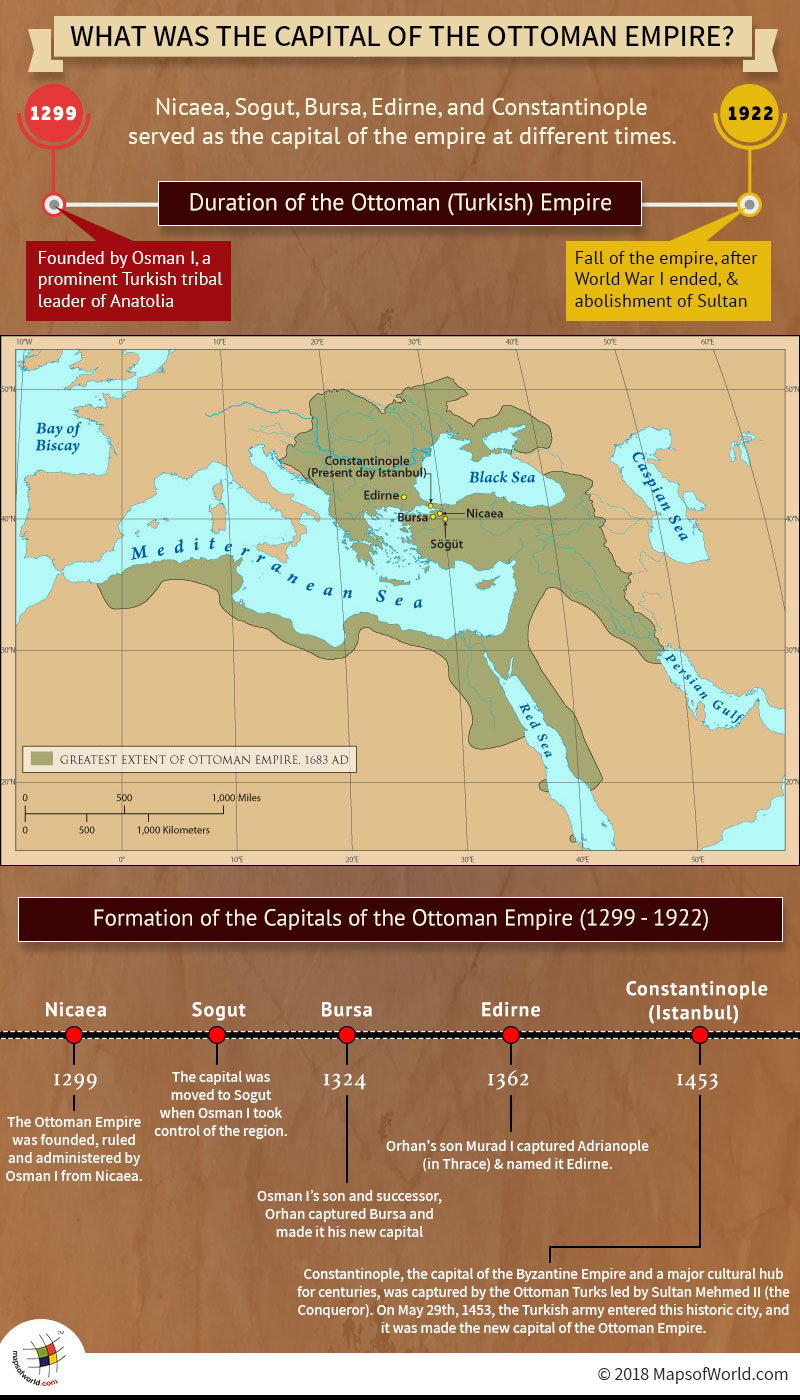What Was The Capital of The Ottoman Empire?
The Ottoman Empire, also known as the Turkish Empire, was founded at the end of the 13th century, and lasted until the end of World War I. Multiple cities served as its capital through the centuries: Nicaea, Sogut, Bursa, Edirne, and Constantinople served as the capital of the Empire at different times.
The Ottoman Empire was founded in 1299 by Osman I, a prominent Turkish tribal leader of Anatolia. The Ottoman beylik (principality) ruled by Osman I was administered from Nicaea. This was moved to Sogut when Osman I took control of the region and established the Ottoman Empire. It remained Osman’s lifelong ambition to capture Busra al-Sham, but he took ill during the eight-year-long siege. In 1324, his son and successor Orhan won Bursa and made it his new capital.
Later, Orhan’s son Murad I captured Adrianople (in Thrace) and renamed it Edirne. The exact year of the Ottoman capture of Edirne is disputed, but many scholars believe it was taken in the year 1362. Edirne was not immediately named the capital of the Empire, but over the next few years, Murad moved the administration and treasury to the city.
The capture of Edirne was a significant achievement for the Ottomans as it was the most important Byzantine city apart from Constantinople and Thessalonica. Murad was a very ambitious man and was the first Ottoman ruler to adopt the title of Sultan. He and his successors were responsible for much of the expansion of the Ottoman Empire across Asia Minor and the Balkans. For about a century, Edirne remained the capital of the Ottoman Empire.
One of the watershed moments in the history of the Ottoman Empire was the capture of the ancient city of Constantinople, the capital of the Byzantine Empire and a major cultural hub for centuries, by the Ottoman Turks led by Sultan Mehmed II (the Conqueror). On May 29th, 1453, the Turkish army entered this historic city, putting an end to the centuries-old Byzantine Empire and bringing an end to the period historians refer to as the Middle Ages. The capture of Constantinople was marked by one of the earliest usages of gunpowder.
As the new capital of the Ottoman Empire, Constantinople or Istanbul, soon rose as the key center of administration, art, and culture, and witnessed the expansion and later the fall of the Empire in 1922 when the Sultan’s title was abolished. Turkey was declared a republic the following year.
Visit the following to learn more about Turkey:
Related Maps:



